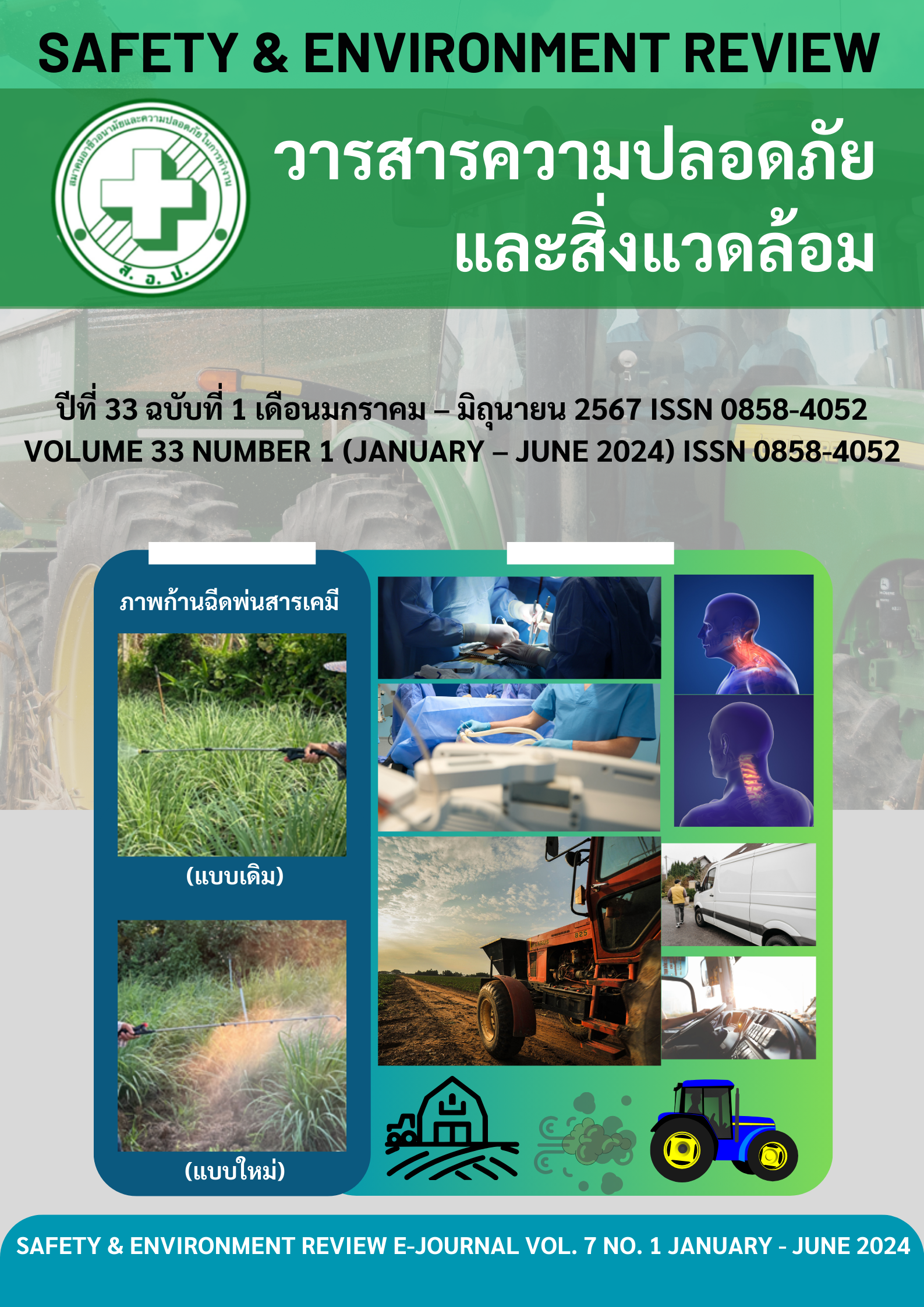ERGONOMICS STUDIES TO ASSESSMENT RISK AND THE PREVALENCE OF MUSCULOSKELETAL DISORDERS OF STEEL TIE WORKERS IN A CONSTRUCTION PROJECT OF CHONBURI PROVINCE
Keywords:
Steel tie worker, Assessment risk, Prevalence of organ injuriesAbstract
This research study’s objective was to assess the risk of working posture of construction workers by. The level of risk arising from work. and study the prevalence of organ injuries from construction work. of steel tie staff in one of the construction projects in Chonburi Province. The cross-sectional descriptive Study was perform to collect data only once. There were a total of 44 people in the sample who passed the inclusion criteria. The results of this research found that from the analysis of work to check and assess ergonomics using the rapid Entire Body Assessment (REBA) Assessment method, steel tie workers in construction projects had ergonomic postures. The result has a score of 12, which means it must be at very high risk. Should be improved immediately and using the Nordic musculoskeletal questionnaire (NMQ). This research found that There is an organ of movement of the steel tie workers. Have had an injury in the past 12 months and the most injured organ is the lower back, 21 people, representing a percentage (47.73), and having had an injury in the past 7 days. And the most injured organ is the neck, 5 people, accounting for a percent (11.36). Therefore, the results of this study can be used as a basis for further improvement in work conditions. To reduce ergonomic risks and as a guideline for engineering design or improvement of work methods that will help solve the problem of occupational health of steel tie workers in construction projects in the future.
References
Office of the Economic Development Council and national society in 2022; Available from: https://www.krungsri.com/th/research/industry/industry-outlook/Construction-Construction-. (In Thai).
Compensation Fund Office, Social Security Office. Workmen's compensation fund statistics in 2018 – 2022 ; Available from:https://www.sso.go.th/wpr/assets/upload/files_storage/sso_th/84b88f068b29c808bf3efe33028022. (In Thai).
Hignett, S., & McAtamney, L. Rapid entire body assessment (REBA). Applied ergonomics, 2020;31(2), 201-205.
Krejcie RV & Morgan DW. Determining sample size for research activities. Educational and Psychological Measurement. 1970;30(3):607-10.
Jongkoli P. The workload assessment in building construction activities. Srinagarind Med J. 2013;26(4):317-324. Available from: http://sutir.sut.ac.th:8080/jspui/bitstream/123456789/5356/2/Fulltext.pdf (in Thai)
Phonkot P, Taudom T, Wansri W. The assessment of ergonomics and fatigue risks from the work of construction workers at The One Project. Chalermkanchana Academic Journal, 2020;7(2), 16-16. (in Thai)
Chatmuangpak A. The assessment of workload in building construction activities. Department of Industrial Engineering, Suranaree University of Technology, Nakhon Ratchasima. 2012. Available from: http://sutir.sut.ac.th:8080/sutir/bitstream/123456789/4134/2/Fulltext.pdf (in Thai)
Sankhabut W, Chaiklieng S. Prevalence of Musculoskeletal Disorders Among Informal Sector Workers of Hand-Operated Rebar Bender in Non-Sung District of Nakhon Ratchasima Province. KKU Research Journal (Graduate Studies), 2013, 9. Dagur, A. S. Evaluation Of Risk Related To Musculoskeletal Disorders On Building Construction Sites, 2016. PhD Thesis. MNIT Jaipur.
Cheraghi, M., Shahrabi-Farahani, M., & Moussavi-Najarkola, S. A.Ergonomic risk factors evaluation of work-related musculoskeletal disorders by PATH and MMH in a construction industry. Iranian Journal of Health, Safety and Environment, 2019;6(1), 1175-1189.
Downloads
Published
Issue
Section
License

This work is licensed under a Creative Commons Attribution-NonCommercial-NoDerivatives 4.0 International License.
This article is published under a Creative Commons Attribution-NonCommercial-NoDerivatives 4.0 International License (CC BY-NC-ND 4.0), which allows others to share the article with proper attribution to the authors and prohibits commercial use or modification. For any other reuse or republication, permission from the journal and the authors is required.



